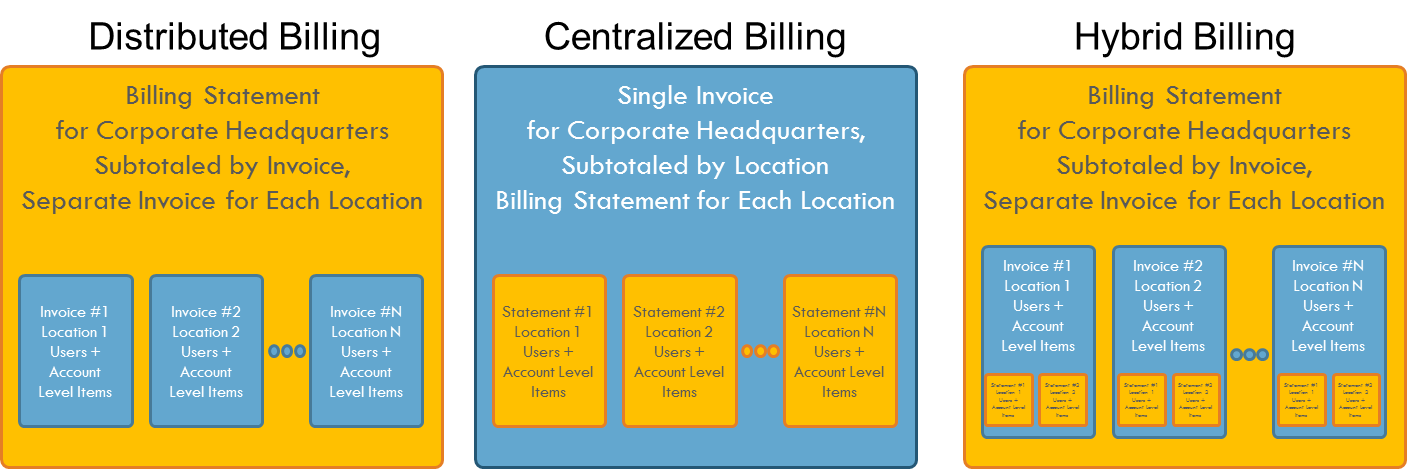Why settle for anything other than Enterprise Billing?

Post by
Artie Chang
October 27, 2016
October 27, 2016

Enterprise Billing
Enterprise cost center management and analysis can be a key area of optimization for enterprises. Cloud services need to adapt to various billing infrastructures and configurations. PanTerra’s advanced enterprise billing system provides unlimited billing flexibility for enterprises that want their cloud services cost structure to fully integrate with their existing cost structure. With PanTerra, everything from centralized corporate billing to distributed “franchise” billing can be configured.
PanTerra's enterprise billing features include:
- Customizable billing groups – Billing groups can represent locations, regions, corporate functions or any division/group within the enterprise. Thus you can create any billing infrastructure you want from a centralized single invoice to a distributed "franchise" model to anything in-between.
- Separate billing statements and invoices – Create billing statements (that are not actual invoices) for reports or analysis separate from actual billing invoices. Billing statements can be used by managers and finance departments to track expenses.
- Multi-level billing invoices and statements with multi-level subtotaling – Create any number of billing sub-totals within the account and “roll-up” multiple billing statements or invoices. This allows for unlimited flexibility in billing for an enterprise. For example, you can have invoices per location or region and a central billing statement that aggregates all invoices together into a full account billing statement. Or you can have billing statements for each location and a single corporate billing invoice with each location sub-totaled.
- Phased roll-out of account – Phase the rollout of an account over time. Add new locations or groups or change any location at any time. Changes to billing preferences are made within the same day.
- Multiple billing types within an account – Multiple billing types can be assigned per billing invoice, including multiple credit cards or manual invoicing per invoice. This is perfect for distributed "franchise" invoicing where each location receives a separate invoice and can select a separate payment type.
- Line item cost splitting between billing groups – Any line item can be split between multiple billing invoices. So for example, if a user splits his/her time between two locations (in two separate invoice groups), then the admin can split the user’s seat cost between the two invoices.
In my next post, I’ll talk about enhanced enterprise security that includes multi-factor authentication and the option to implement single sign-on.
.jpg?width=500&height=500&name=Are%20you%20Getting%20a%20Good%20Deal%20(1).jpg)
Comments